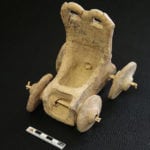 Mysteries
Mysteries  Mysteries
Mysteries  History
History 10 Surprising Stories About the Texas Rangers
 Humans
Humans 10 Philosophers Who Were Driven Mad by Their Own Theories
 Miscellaneous
Miscellaneous 10 Video-Game-Worthy Weapons and Armors from History
 Weird Stuff
Weird Stuff 10 Psychics Who Accurately Predicted Wartime Events
 The Arts
The Arts 10 Pieces of Art Inspired by a Broken Heart
 Health
Health 10 Science Fiction-Sounding New Medical Treatments
 History
History 10 Surprising Facts About the Father of Submarine Warfare
 Space
Space Ten Astonishing New Insights into Alien Worlds
 Weird Stuff
Weird Stuff 10 Bizarre Summer Solstice Rituals Still Practiced Today
 Mysteries
Mysteries Top 10 Haunting Facts About the Ghost Ship MV Alta
 History
History 10 Surprising Stories About the Texas Rangers
 Humans
Humans 10 Philosophers Who Were Driven Mad by Their Own Theories
Who's Behind Listverse?

Jamie Frater
Head Editor
Jamie founded Listverse due to an insatiable desire to share fascinating, obscure, and bizarre facts. He has been a guest speaker on numerous national radio and television stations and is a five time published author.
More About Us Miscellaneous
Miscellaneous 10 Video-Game-Worthy Weapons and Armors from History
 Weird Stuff
Weird Stuff 10 Psychics Who Accurately Predicted Wartime Events
 The Arts
The Arts 10 Pieces of Art Inspired by a Broken Heart
 Health
Health 10 Science Fiction-Sounding New Medical Treatments
 History
History 10 Surprising Facts About the Father of Submarine Warfare
 Space
Space Ten Astonishing New Insights into Alien Worlds
 Weird Stuff
Weird Stuff 10 Bizarre Summer Solstice Rituals Still Practiced Today
10 Amazing People With Hypertrichosis
Bobs. Pixies. Long and sleek. Short and spiky. Hair is something most of us have. Even those who are bald usually had locks upon their head at some point in time. For most, the daily ritual of washing, drying, and styling their hair is somewhat mundane. But what if your hair wasn’t just on your head and scattered about your body in various amounts? What if you were completely covered with it? What if your face, whether male or female, displayed inches upon inches of thick hair?
This seems unbelievable, but it actually happens. Though the condition is quite rare, there are those around the world who suffer from this extreme excess of hair, known as hypertrichosis. Though living with so much hair might seem unbearable, people with hypertrichosis have been thriving and making a name for themselves for years. Although some were taken advantage of, many became famous and even had families of their own. Interesting is the life of those who are hairy.
10 Alice Doherty
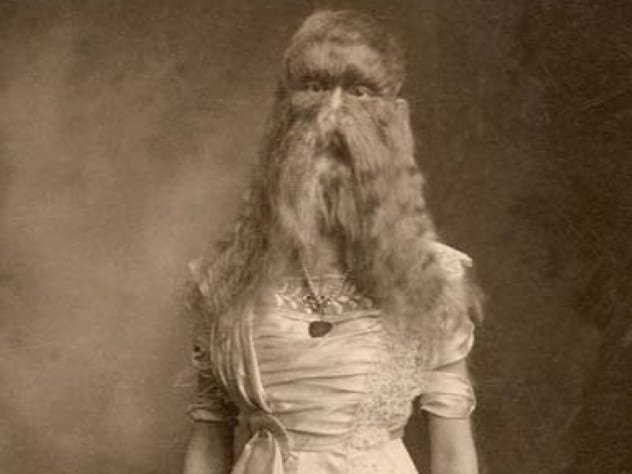
Known as the “Minnesota Woolly Girl,” Alice Doherty has earned the distinction in history as being the only recorded person with hypertrichosis born in the United States. Alice was born to average parents in March 1887. She had two other siblings who showed no signs of hypertrichosis. Alice’s parents loved her but realized quickly that although she was just a normal girl on the inside, her hairy outside traits were something that people would gladly pay to see. At the age of two, her parents started exhibiting her in their local community to earn money. The people who visited Alice commented on her spirit as well as her strange looks, noting that Alice was “as frolicsome as a kitten.”[1]
As she grew, so did Alice’s woolly mane; by five years of age, her facial hair, which completely covered her face, was more than 13 centimeters (5 in) long. By her teens, it had grown to a whopping 23 centimeters (9 in)! Alice’s popularity grew along with her hair, and her parents decided it was time to make more money. Alice’s parents set her up in a standalone setting: a storefront exhibition. The front of a store would be rented out as a performance space where people were charged to see Alice. Along with “Professor Weller’s One-Man Band,” she was set up in storefronts in many cities, gaining both fame and money.
Although Alice was bringing in good money, she wasn’t doing as well as other extremely hairy people of the time, i.e. Jo-Jo the Dog-Faced Boy and the like. This was simply because she didn’t have big backers in the entertainment industry. So as Alice aged, she discovered she wasn’t an entertainer at heart. In 1915, with a large sum of money from her youth spent as a peculiarity for the masses, Alice retired in Dallas. She spent the rest of her days there until she passed away peacefully in June 1933, at the young age of 46. Her golden facial locks delighted people for many years, and she is still remembered as America’s hairy beauty.
9 Barbara Van Beck
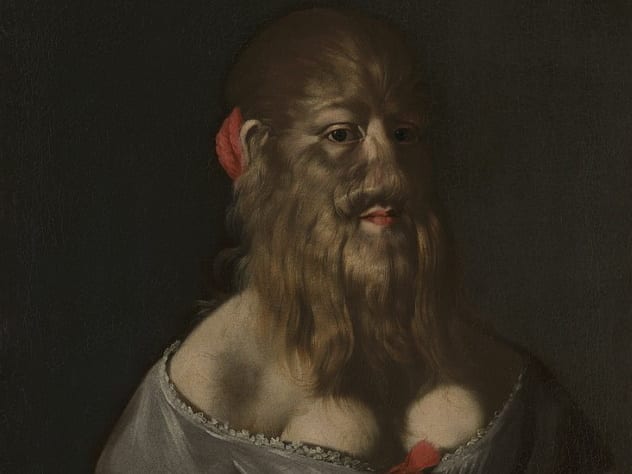
Hypertrichosis has been known for centuries, and one of the most well-documented cases was that of Barbara van Beck, the hairy maid. Barbara Urslerin was born in Germany in 1629; she was the only person in her family to exhibit hypertrichosis. Though this was long before the Victorian explosion of freak shows, Barbara’s family realized their daughter was different and could make money off her. At a mere three years of age, Barbara’s family started putting her into traveling shows to display her.
Though many saw poor, hairy Barbara as a monster, she was far from it. Barbara could speak multiple languages and was an exceptionally skilled harpsichord player. Nevertheless, most of the audience didn’t come to see her exquisite talents; they came to see her as an oddity to be gawked at. Her exploitation in some instances even bordered on prostitution. A man known Elie Brackenhoffer saw Barbara in Paris once and asked her to undress in front of him. Although there is no documentation to show that anything transpired, Barbara was encouraged to disrobe at any request because it brought in the big money.[2]
As Barbara aged, she married Johann Michael van Beck and had a child. It seemed as though Barbara’s life was taking a turn; she was going to get away from the limelight. However, she would still be exhibited by her spouse. In 1660, Barbara was touring France with her husband, but instead of claiming Barbara as his beloved wife, he said that he was her “agent” and actually went to the bailiff of the town of Beauvais to ask for permission to show off his “strange prodigy of nature.” Barbara was not loved as a person by her husband but was loved as a source of income.
Due to her extreme hair growth, Barbara was examined by many doctors of her time. Many saw her as an average woman afflicted with a horrible condition, but some were so much harsher. One doctor, Holger Jacobsen, actually examined poor Barbara and decided that the only way she could look as she did was because she was the product of mating between a human and an ape!
Despite her time in the limelight, Barbara’s story in history ended abruptly. In 1668, after a visit to London, she disappears from all records. Given that she was a well-documented, well-known person at the time, people are still in disbelief that Barbara simply vanished. Wherever Barbara went, let us hope she had a quiet, peaceful end to her life—not as an oddity but as a talented, spirited woman.
8 Julia Pastrana
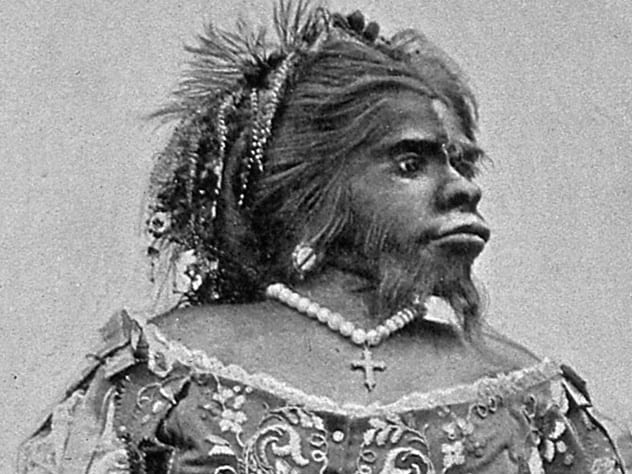
Though many tales of those with hypertrichosis do have their pleasant aspects, some are not so lucky. So goes the life story of Julia Pastrana. Julia was born in the mountains of Mexico in 1834, and from the beginning, her parents knew there was something very different with their child. Upon her birth, Julia emerged with hair covering her entire body, except the soles of her feet and the palms of her hands. Along with the excess hair, Julia also had other curious characteristics, including abnormally thick lips, an oversize jaw, a prominent brow with thick, oversize eyebrows, an abnormally large nose, and irregularly shaped teeth. Study of Julia led researchers to a diagnosis based on her strange attributes: Julia suffered from an incredibly rare condition known as acromegaloid hypertrichosis.
Although she had these strange attributes, Julia was healthy and displayed poise and a plump 135-centimeter (4’5″) stature. Her poise got her hired by the governor of Sinaloa; she was a servant girl in his household. Domestic life came to a quick halt for Julia in 1854, when she was discovered by M. Rates, who whisked her off to New York to be exhibited for her unique features. Though the public was greatly intrigued by Julia, doctors also were showing her great attention. Dr. Alexander Mott in New York insultingly said that Julia was a hybrid of a human and an orangutan. This was just the start of the slander and mistreatment of poor Julia Pastrana. A new promoter and a new set of doctors in Cleveland exploited her for money and claimed that she wasn’t human but a “distinct species.”
In London, another new promoter, Theodore Lent, used Julia again for display, but due to his amazing skills at selling the odd, he took the most from Julia. Lent cast her in plays that stigmatized her as an unlovable monster due to her looks. When people asked how Julia felt during press releases, Lent assured the readers that Julia was happy and didn’t covet wealth, but Lent sure did. As people grew to love Julia more, Lent was afraid that his money source would get away from him, so in an attempt to keep Julia as a cash cow, he married her and then had her locked in his apartment, where she wasn’t allowed to leave except under cover of darkness. He let doctors examine her anytime they wished, and during one examination, it was discovered that Julia was pregnant. In March 1860, Julia gave birth to a hairy child which lived only 35 hours; Julia herself succumbed to postpartum complications a mere five days later.[3]
After her death, though, Julia’s woes didn’t end. Because she was such a curiosity, and her husband was always after an easy dollar, he had the bodies of both his wife and his dead son embalmed. The tedious six-month process resulted in near-perfect mummification. For the next 20 years, he displayed their bodies in various locations, milking Julia for money even in death. After Lent’s own death, Julia’s mummified body switched hands a plethora of times, never staying in one place long. Her remains were only finally returned to Sinaloa for burial in 2013.
7 Tai Djin
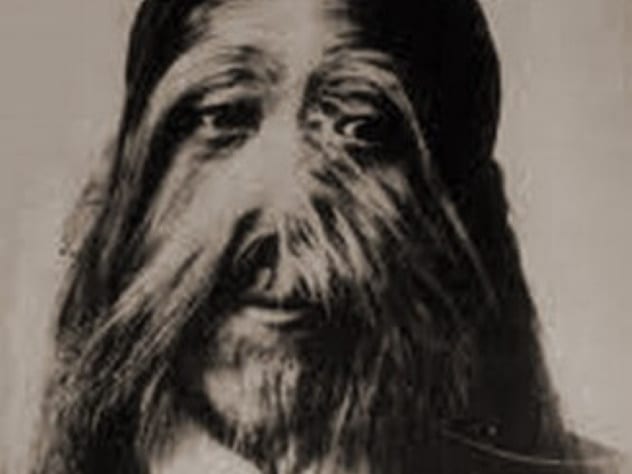
Tai Djin’s story is one shrouded in somewhat fantastical anecdotes and questionable sources. It has been passed down in the lore of Shaolin-Do kung fu temples for ages and is amazing, even if the details are a bit fantasized. Tai Djin was born in 1849 in China. His birth was deemed cursed and afflicted by demons, as he was born with hypertrichosis. His highly superstitious family saw him as something to be disposed of and left him in the forest to die. While walking in the forest, a monk supposedly found Tai Djin and brought him to the Fukien (aka Fujian) Shaolin temple, where he was raised by an entire monastery of monks.[4]
These monks took great pains to teach Tai Djin everything they could about their ideals. Tai Djin was able to study with many different monks of different specialties while living at the temple. He was often referred to as “everyone’s favorite son.” Tai Djin was very receptive and learned quickly; under the tutelage of the monks, he found a passion for kung fu. During his education in martial arts, Tai Djin reportedly mastered over 200 empty-handed systems as well as 140 weapon systems. His specialties included the infamous “death touch.” Many of the attacks Tai Djin mastered were never mastered by anyone before him.
After years of studying and extensive training, Tai Djin became the first grand master of Shaolin-Do and one of the few to master all the skills of the seven Shaolin temples. Tai Djin continued teaching well into his older age, passing on the kung fu tradition to young apprentices. Later in his life, Tai Djin and the monks were warned of an impending attack on the monastery by Japanese pirates; the monks protected the Fukienese coast from them. Afraid of what would happen, Tai Djin and the monks loaded up all the valuables, artwork, and books and set fire to the temple themselves. The monks evacuated to the mountains, where Tai Djin continued training his pupils. I Chang Ming, his most promising student, became the second of three grand masters of the Shaolin order. After a colorful and fantastical life, Tai Djin died in 1928 at the ripe old age of 79. Hypertrichosis never slowed him down, and he truly earned the description of “badass.”
6 Sacred Family Of Burma
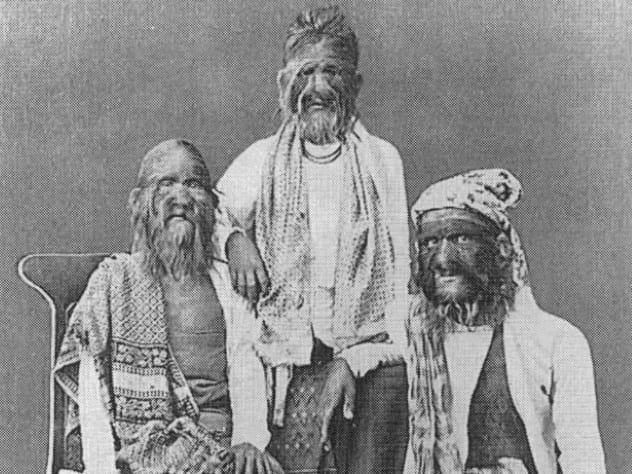
Though hypertrichosis is very rare, it is a genetic condition and can be passed down from family member to family member—which is exactly what happened in the case of the amazing Sacred Family of Burma. In an expedition to Ava in 1826, John Crawfurd described meeting an amazing wolf-man named Shwe-Maong. Shwe-Maong suffered from hypertrichosis and, due to his novelty looks, was given to the king of Ava as a gift at a mere five years of age. The king made him his official court jester. Excelling at entertaining the king for so many years, Shwe-Maong was presented with the ultimate kingly gift: a wife. After their union, Shew-Maong and his wife had four children. One of the brood, Maphoon, was also afflicted with hypertrichosis.
Life went on for Shwe-Maong, but little is known until Crawfurd returned to Ava many years later. It was learned that Shwe-Maong was murdered and that Maphoon, his hairy daughter, was now an adult with children of her own, one of whom was as hairy as his mother and grandfather! Named Moung-Phoset, he lived with his family until his marriage, during which he bore several children. His only daughter, Mah-Me, was hairy as well! The genetic presence of hypertrichosis was so strong in this family line that nearly every generation had at least one family member who presented with the characteristics of the disorder.
In 1885, the family suffered as the Third Burmese War was raging through the country. Their home within the palace of the king was destroyed, and the family escaped into the forest for protection. An Italian officer who was friends with the king and court was sent to retrieve them from their forest hideout. Of course, seeing their unique features, the Italian military man was struck by how much money they could possibly make. The hairy family, under the care of fellow countryman Mr. Farini, took to Europe to make money by exhibiting their unique bodies. Sadly, before they left, Mah-Me died at a young 18 years of age. However, the exhibition travels didn’t halt. London, Paris, and even the United States bore witness to the “Sacred Hairy Family of Burma.”[5]
Although the family was incredibly famous and known in various countries, their story comes to a complete standstill after their time in America. P.T. Barnum exhibited them while they were in the United States. Saying that the family and their royal roots were of good luck, Barnum encouraged people to touch them (for a small fee) to gain that luck. The luck didn’t rub off on the family, however, as after this stint with Barnum, they all but disappear from history. No one knows what happened to them, if they had more hairy progeny, or if they even made it back from the US. For now, we can only wonder what happened to the multigenerational family of hairy folks.
5 Percilla Lauther
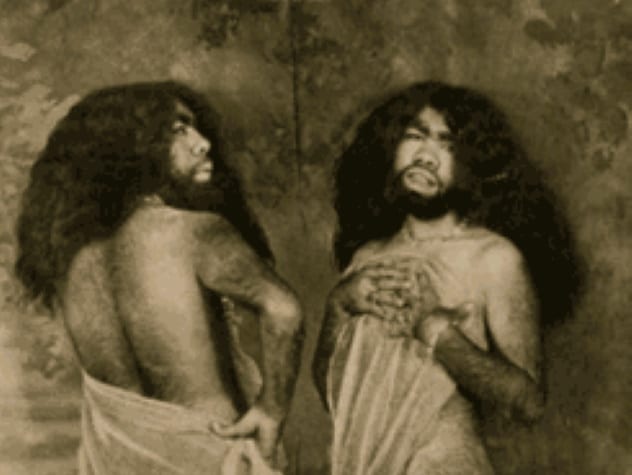
So many people with hypertrichosis had a hard life. From ridicule to exploitation, many led lives that were anything but serene. However, one hairy heroine had a life that what nearly picturesque, even though she was covered with hair. Percilla Roman, known as the “Monkey Girl” onstage, was born in Puerto Rico in 1911. She was born with hypertrichosis and also bore two rows of teeth. Although she was an oddity to regular folks and doctors alike, Percilla’s father was unsure what to do to best care for his daughter, so to ensure that he could do the best for her, he took Percilla and his wife to New York in hopes of offering her help for her affliction. During his time in New York, he decided that perhaps his daughter could make money. He wasn’t greedy; he just realized that with her appearance, Percilla would face hardships, and this was a way to ensure that she had money. With the help of promoter Karl L. Lauther, who hired the girl on the spot, Percilla became a successful sideshow entity at a young age.
After Percilla’s mom went back to Puerto Rico, Lauther hired help for Percilla’s father to ensure that Percilla had the best care and education he could offer her. Sadly, Percilla’s father was killed in Gainesville soon after hooking up with Lauther. But loving her as his own child, Lauther took Percilla under his wing. He adopted her as his own, gave her everything she wanted, educated her, and even took offense when someone said something rude or patronizing to his newly adopted daughter.
Percilla had a happy life growing up with Lauther and the sideshow circuit. It became even more incredible when she met Emmitt Bejano. Emmitt Bejano was known as the “Alligator-Skinned Man,” as he suffered from ichthyosis. But the hair and the scaly skin didn’t stop a love from blossoming. Percilla and Emmitt fell madly in love. The two eloped in 1938 and had a daughter. Sadly, she was taken by pneumonia at a mere four months old.
After leaving Lauther and performing with Ripley’s Believe It or Not for many years, Percilla and Emmitt bought an acre of land and settled in the carnival community of Gibsonton, Florida. In 1960, the dynamic couple adopted a young son, Tony, and named their homestead P.E.T.—Percilla, Emmitt, Tony. For years, they ran their own carnival show and traveled around a bit before finally retiring from performance and roadshows for good in the 1980s. They starred in many movies, made TV appearances, and gave many interviews discussing their lives as sideshow icons. The two retired to their home in Gibsonton permanently during the 1990s and remained madly in love, even with the passing of Emmitt in 1995. Percilla, ever the amazing woman, continued her TV appearances, though after Emmitt’s death, she remained clean-shaven as an act of mourning.[6] This remarkable lady passed quietly in her sleep in 2001 at 89 years old.
4 Jo-Jo The Dog-Faced Boy
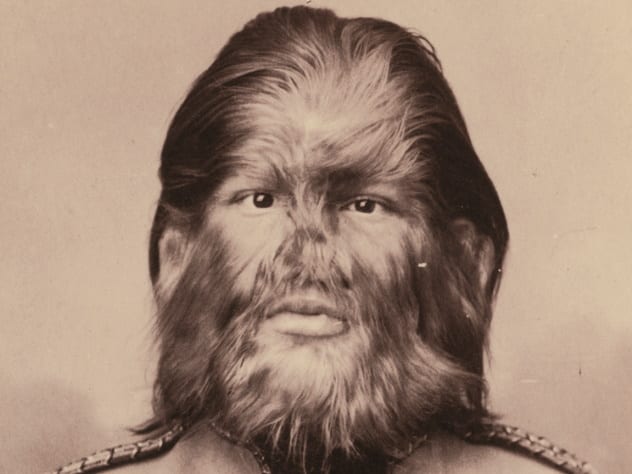
Fedor Jeftichew, known as Jo-Jo the Dog-Faced Boy, was another highly successful and well-liked person with a lot of hair. Born in St. Petersburg, Russia, in 1868, Jo-Jo, like his father, suffered from hypertrichosis. His father, Adrian, took Jo-Jo with him as he toured Europe as the “Wild Man From Kostroma Forest.” He made claims that Jo-Jo was born from a Russian village girl and her affair with a bear. Because this was a grand claim made by a famous oddity, throngs of people showed up to see Jo-Jo and his hairy, cub-like appearance. Although Jo-Jo’s father was famous for his looks, he truly was wild—a mean drunk and cruel to both audience and son. He succumbed to alcoholism, and then it was time for Jo-Jo to become the star.
In 1884, Jo-Jo came into contact with a tour agent for P.T. Barnum and decided that he could make tons of money by working for the famous showman. So Jo-Jo hopped ship and headed to America, where he joined Barnum’s show and was called “the most prodigious paragon of all prodigies secured by P.T. Barnum in over 50 years.” In his first public appearance, audiences were shocked by Jo-Jo; his hairy face was contrasted by his regal choice of clothes: a Russian cavalry uniform. After Barnum assured them that Jo-Jo would cause no harm, inquisitive audience members came up to tug on Jo-Jo’s facial hair, confirming that it was the real deal! To bring more people into see Jo-Jo, Barnum created an outrageous and totally false backstory for him. He claimed that Jo-Jo was found in the wild by hunters. His father was a wily beast and was shot on sight; Jo-Jo was rescued and was now a performer with Barnum. The wild story pulled audiences in from around the US.
Although Barnum encouraged Jo-Jo to bark and bite audience members with his only two teeth, Jo-Jo was actually a very civilized, well-spoken individual. He was somewhat quiet in person and was generous his entire life. He spoke as many as five languages and enjoyed reading. Jo-Jo had a very long run with Barnum; he was one of the highest-paid performers in Barnum’s show, making up to $500 a week in 1886. His spent time with Barnum in many different endeavors: sideshows, curiosity menageries, and then finally finding a permanent home in the Barnum & Bailey touring circus.
Jo-Jo loved performing for audiences, but sadly, he died young. While touring Greece with the circus, a 35-year-old Jo-Jo caught pneumonia and died shortly thereafter.[7] With no personal relationships to speak of and bearing no heirs, Jo-Jo’s prolific life had met its final curtain. Jo-Jo was so beloved that once word spread to the United States of his death, both performers and the public mourned his passing. Labeled a dog, Jo-Jo was a sideshow icon who won the hearts of all those around him.
3 Lionel The Lion-Faced Man
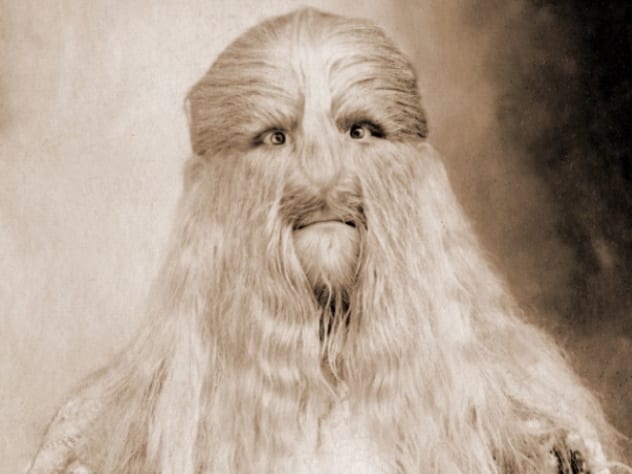
Stephan Bibrowski, also known as Lionel the Lion-Faced Man, was born in 1890 in Poland. Upon birth, it was discovered that Stephan was covered in 2.5-cenimeter (1 in) hair over the entirety of his body. His mother, seeing her son as an abomination, chose to give him to a German promoter, Sedlmayer, when poor Stephan was only four years of age. Lucky for Stephan, Sedlmayer had a soft spot for the young, hairy boy and sent him to a German boarding school so that he could receive a proper education.
Beyond school, though, Stephan loved performing. Sedlmayer invented a wild story for Stephan’s hairy condition, saying his mother witnessed his father being eaten by a circus lion, and, alas, her poor son was imprinted with the hair and ferocity of a lion. However, nothing could be farther from the truth. Stephan loved performing and was an accomplished showman. He toured around the US for most of his life, delighting curious audiences everywhere. He performed gymnastics, and to quell any fears the audience had of his “lion-like” appearance, Stephan would talk in a gentle voice, showing off the multiple languages he spoke with ease.
He loved entertaining so much that he was horrified when a fire caused him to fear losing his hair. In 1904, he was staying at a hotel in New York when it caught fire. Terrified that he would be set alight and lose his wild mane, Stephan was one of the first people out of the building, both protecting himself and his hair. He was afraid that if he lost all of his hair, he’d be just a regular man with no career as a sideshow oddity.
Stephan moved to Germany in 1907 to perform there and then back to the United States to perform again until 1928. Finally, ready to retire, Stephan moved again to Germany, this time for good. In 1932, at the young age of 41, Stephan suffered a heart attack which claimed his life.[8] Seems straightforward, right? However, there are sources that say that a heart attack wasn’t the cause of this great showman’s death. Some say he died of other causes in Italy, while others even claim that he died in a Nazi concentration camp. No matter what Stephan succumbed to, we lost a great figure in sideshow history the day Stephan, the Lion-Faced Man, died.
2 Krao The ‘Missing Link’
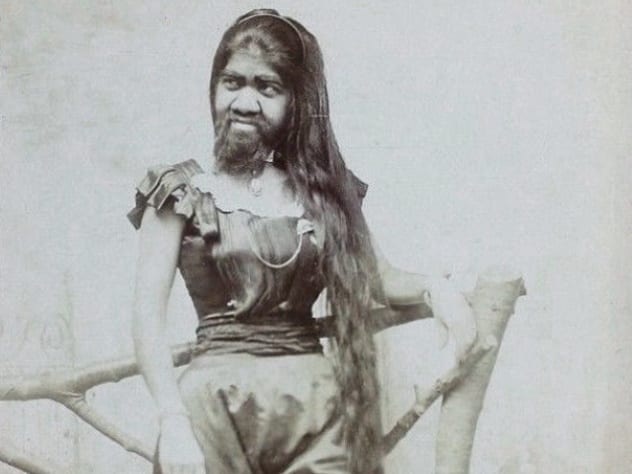
The theory of evolution turned the world upside down when Darwin suggested the natural mechanism after his trip to the Galapagos. Many didn’t believe Darwin and needed proof—a missing link between humans and apes. Supposed proof came from the discovery of Krao. Krao, also known distastefully as “Darwin’s Missing Link,” was born in 1876 in a small village in Laos. She suffered from hypertrichosis and was covered in hair from head to toe, as well as displaying other features like an extensive amount of extra teeth, hyperextendable joints, and hyperflexible feet. Most notably, she had a long swathe of hair that ran from the base of her neck and down her spine, like a long, dark mane.
Krao was discovered at a young age by scouts who worked for the showman G.A. Farini. Her parents sold her to the scouts for a few hundred dollars, and she was taken back to London, where Farini adopted her legally and started her exhibition. Krao, based on her appearance, garnered tons of attention because she was used as proof of Darwin’s theory of evolution. They claimed that Krao was part of a long-lost tribe of “man-monkeys” that were called the Kraos-monink. They dwelled in the deepest part of the Laotian jungle. Because of her hyperflexible feet and hyperextendable joints, the story grew to say that Krao lived in the trees with her parents and other simian relatives. They had no knowledge of fire, no religion, and a language of 500 words.
Of course, the audience bought this hook, line, and sinker, but it was just a cockamamie story used to draw more money into the sideshow. Krao was as normal as any person at the time; she was just covered in hair. So normal was Krao that while she was living in New York, reporters were often blown away by what an ideal Victorian woman she was. She was quiet, refined, and very intelligent. She learned English quickly and then took to learning German. Though covered with hair, she loved to maintain her femininity. She adored fancy dresses, ribbons, and jewelry. In one interview, she spoke of how much she adored her new life because there were “no houses, no shops, no toys, no fine dresses in Laos.”
Unlike many of her predecessors, Krao was happy with going on exhibit in the United States because it was on her terms. When she wanted to work, she did, and when she wasn’t in the mood, she didn’t. She was free to do as she pleased and spent most of her adult life being her true and genuine self. She established her home in Brooklyn and spent nearly all her life there. She worked at Coney Island and many dime museums. She lived in an apartment building owned by a German family, who she loved and talked with on a daily basis. She kept a house, had many friends over for entertaining, and played the violin, read, and crocheted in her personal time.
Sadly, the lovely Krao succumbed to the flu in 1926. She wished to be cremated upon her death so that her body could not be displayed, but New York law prevented the cremation and stipulated that she must be buried. At her funeral, all the Coney Island oddities came to pay their respects. The Fat Lady, Carrie Holt, is quoted as saying of Krao, “If anyone has gone to heaven, that woman has.”[9]
1 Petrus Gonsalvus
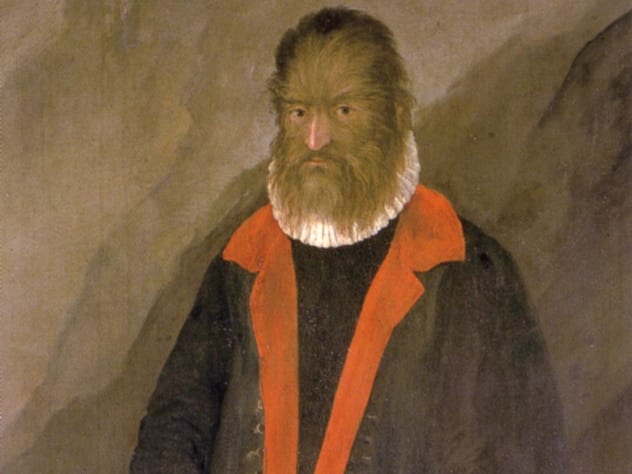
Born somewhere around 1537, Petrus Gonsalvus was a native of the Canary Islands and suffered from hypertrichosis. Though a slave at the time, his hirsute nature would ultimately change his life for the better; he would go from slavery to aristocracy within his lifetime! At ten years old, Petrus was gifted to King Henri II of France. King Henri and his wife Catherine adored Petrus. Though he belonged to them, they did not treat Petrus like the slave he formerly was. Henri gave Petrus the opportunity to gain a classical gentleman’s education. He learned to speak and write, learned Latin, and even learned military tactics. He was fluent in aristocratic gestures, etiquette, and tact. At the time, Petrus was more educated than many of the people who were considered aristocratic. At court, he wooed and married a young woman, also named Catherine, with whom he had several children.
In 1589, following a coup, Petrus and his family were left without a benefactor. But due to the amazing life and standing of Petrus, the Duke of Parma took him and his family in and allowed them to make a home under his rule.[10] Petrus, along with two of his children, were covered with hair, but that didn’t stop anyone from adoring the unique family. The family began a tour of Europe, during which they visited many high-society families, doctors, and others who were interested in meeting them. Their portrait was commissioned by order of Duke Albrecht IV of Bavaria. Famed anatomist Felix Plater of Basel studied the family and published his findings. Over the years, Petrus and his family traveled between noble courts and high societies, interacting with the nobility and aristocracy. Like so many others, however, after years of fame, Petrus and his family essentially disappear from history.
A librarian with an obsession with the obscure.
Read about more amazing humans on Top 10 Interesting Facts About The Elephant Man and 10 Incredible Limbless Legends.





